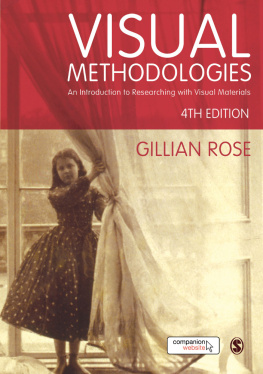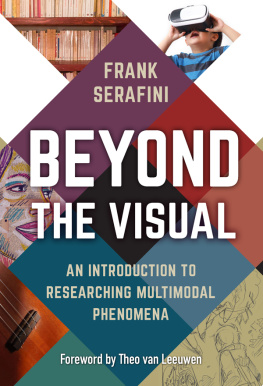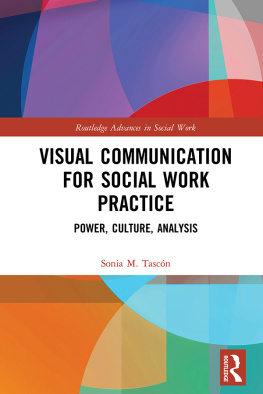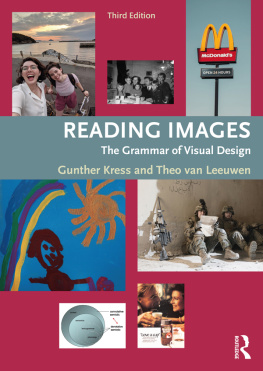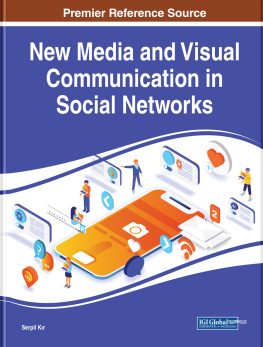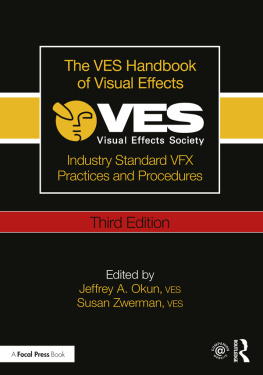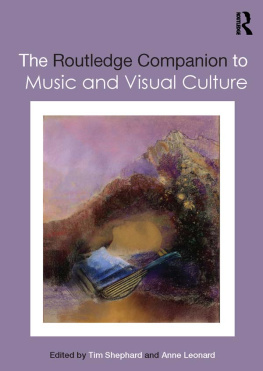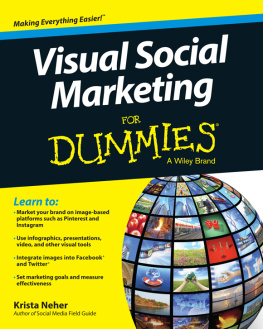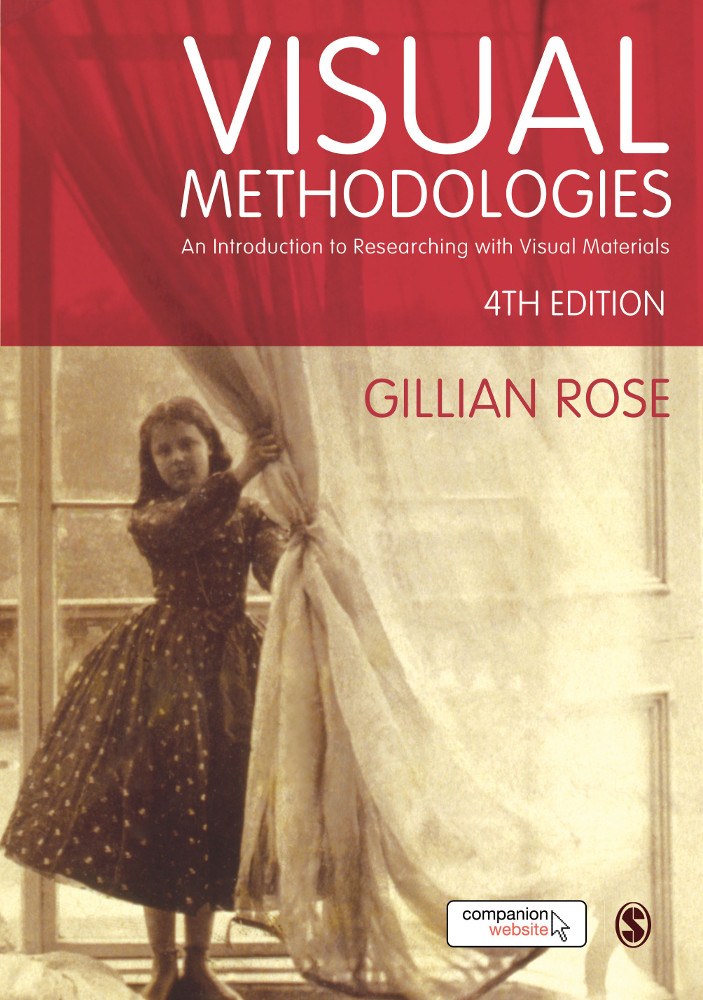Visual Methodologies
For Giorgio and Lydia, again
Visual Methodologies
An Introduction to Researching with Visual Materials
4th Edition
SAGE Publications Ltd
1 Olivers Yard
55 City Road
London EC1Y 1SP
SAGE Publications Inc.
2455 Teller Road
Thousand Oaks, California 91320
SAGE Publications India Pvt Ltd
B 1/I 1 Mohan Cooperative Industrial Area
Mathura Road
New Delhi 110 044
SAGE Publications Asia-Pacific Pte Ltd
3 Church Street
#10-04 Samsung Hub
Singapore 049483
Gillian Rose 2016
This edition first published 2016
First edition published 2001, reprinted in 2003, 2005 and 2006.
Second edition published 2006, reprinted 2006, 2007, 2008, 2010 and 2011.
Third edition published 2011, reprinted 2011, 2012, 2014 and 2015.
Apart from any fair dealing for the purposes of research or private study, or criticism or review, as permitted under the Copyright, Designs and Patents Act, 1988, this publication may be reproduced, stored or transmitted in any form, or by any means, only with the prior permission in writing of the publishers, or in the case of reprographic reproduction, in accordance with the terms of licences issued by the Copyright Licensing Agency. Enquiries concerning reproduction outside those terms should be sent to the publishers.
Library of Congress Control Number: 2015948265
British Library Cataloguing in Publication data
A catalogue record for this book is available from the British Library
ISBN 978-1-4739-4889-1
ISBN 978-1-4739-4890-7 (pbk)
Editor: Robert Rojek
Editorial assistant: Matthew Oldfield
Production editor: Katherine Haw
Copyeditor: Catja Pafort
Indexer: Judith Lavender
Marketing manager: Michael Ainsley
Cover design: Wendy Scott
Typeset by: C&M Digitals (P) Ltd, Chennai, India
Printed and bound in Great Britain by Bell and Bain Ltd, Glasgow
Gillian Rose has provided a welcome overview of the state of the field. Visual Methodologies succeeds both as an introductory text, certain to be widely adopted in the classroom, and as a sophisticated refresher course for those who have followed the rapid maturation of this remarkable interdisciplinary discourse. Added material on the latest advances in digital technology brings this latest edition to the cutting edge of visual culture studies.
Martin Jay, Ehrman Professor, University of California, Berkeley
Visual Methodologies is an indispensable resource for anyone working with visual materials. It offers practical guidance and expert theoretical orientation on how to approach, think about, and interpret visual culture, ranging from archival photography and documentary film to websites and social media. An important aspect of this book is the attention paid to audiences and viewing publics, as well as to the ethical demands of visual research. In this new edition, Gillian Rose brings the book fully up to date with contemporary developments in media arts and digital culture, and explores the new possibilities for visual research made possible by developments in software and data analytics. Whether you are new to studying visual culture or a seasoned expert seeking to refine your approach, Visual Methodologies has you covered.
Christoph Lindner, Professor of Media and Culture, University of Amsterdam
Visual Methodologies is an indispensable book for teaching and understanding methods in visual culture. Clear, comprehensive, and lucid, it makes accessible the how, why, and what of different methodological approaches in ways that elucidate paths to better research and argument. The constantly changing terrain of visual culture today makes many demands on scholarly and theoretical approaches, and this fourth edition does not disappoint, with updated concepts and an explanation of digital methods. As an introduction of methods in cultural studies, communication, and visual culture research, this book is unparalleled. It is essential reading for anyone writing an MA thesis of doctoral dissertation.
Marita Sturken, Professor of Media, Culture and Communication, New York University
Visual Methodologies is an essential book for all students, researchers and academics interested in visual culture. The book has always had an interdisciplinary research, making it an adaptable, meaningful text. With this new edition, the application of Visual Methodologies is made even more vital given its coverage of digital technologies and our expanded engagement with the image through complex and nuanced visualization of everything online. This extends not only our daily perception of the visual, but creates new ground through which to understand ourselves and our relationship to others. Visual Methodologies treats the emergence of this with passion, providing a theoretical and methodological framework that is accessible, engaging and exciting.
Adrienne Evans, Principal Lecturer in Media and Communication, Coventry University
Through its previous editions Visual Methodologies has undoubtedly become a profoundly influential text. Through a series of telling and careful revisions it has been significantly updated in response to changing visual cultures. This edition refreshes and reinvigorates what was already a lively, revealing and vital text. Not least, this updated edition responds directly to changes in digital cultures and the new possibilities of visual engagement and communication. It is the ideal guide to teaching and researching with visual methods.
David Beer, Reader in Sociology, University of York
Gillian Rose has done it again. This indispensable guide to visual methodologies improves with each edition. Extensively updated and revised, there is a new emphasis here on the circulation of images through varied technologies and the potential for digital methods to reveal patterns in the movements, translations and social value of such images. The reader comes away not only with practical knowledge for designing research questions and methods, but crucially with an enhanced understanding of the theoretical foundations and ethical considerations which underpin the most valuable and insightful visual analyses. This is not simply a how to methods book.
Katy Parry, Lecturer in Media and Communication, University of Leeds
For the last 15 years, Roses Visual Methodologies has been an exceptionally influential and invaluable text for those wishing to engage with visual research methods, with each new edition evolving and building upon the strengths of the previous. This fourth edition is no exception. With an expanded coverage of new media, Roses revised work encompasses a comprehensive and detailed overview of imaginative approaches and engagements with visual materials that are readily accessible for undergraduate and postgraduate researchers. Moreover, this new edition effectively addresses many of those pressing questions often asked by student researchers, not only in terms of the practical aspects of using critical visual methods, but also in relation to the dissemination of research through visual techniques. In short, this fourth edition represents a welcome expansion of an already definitive introductory text on critical visual methods.

